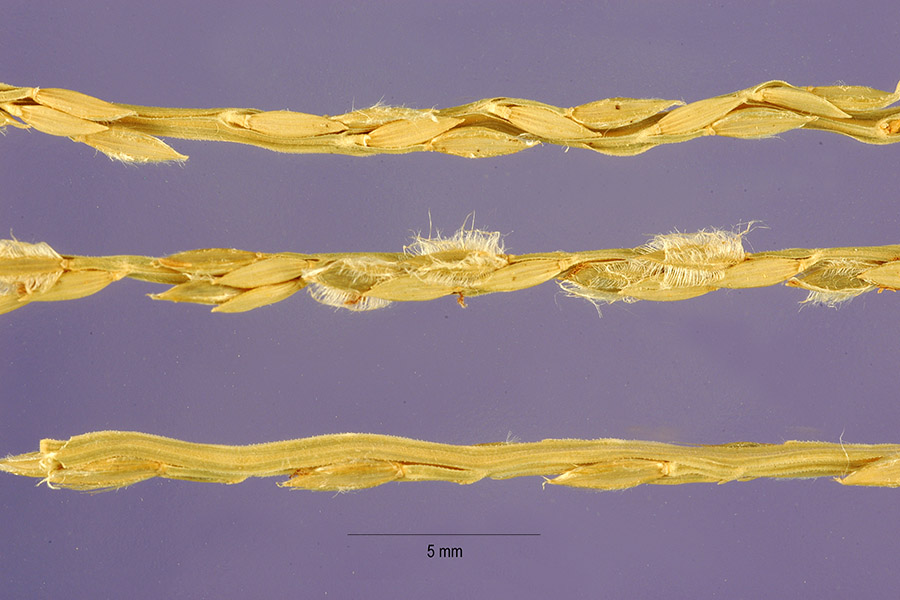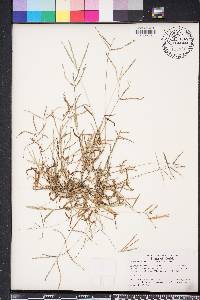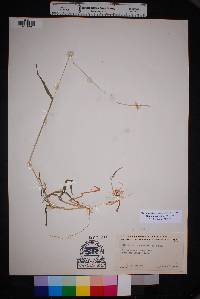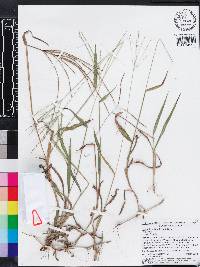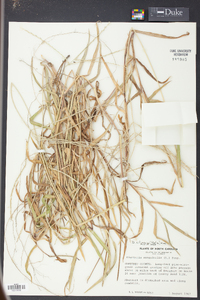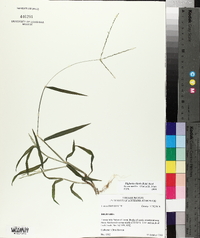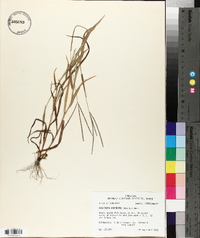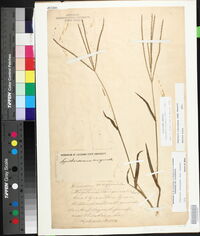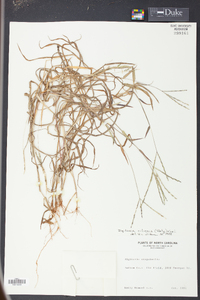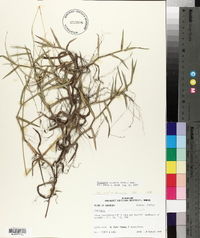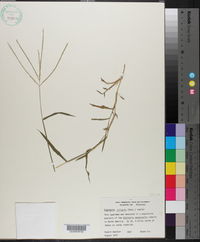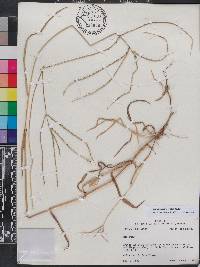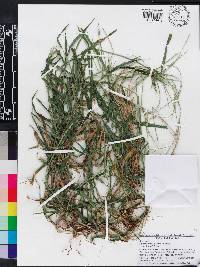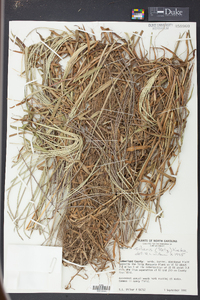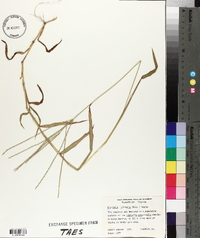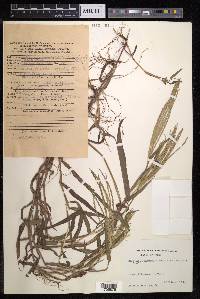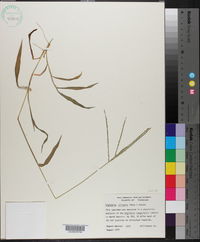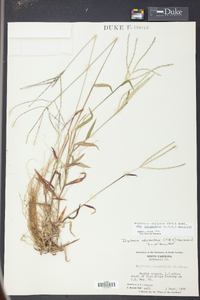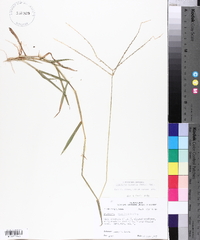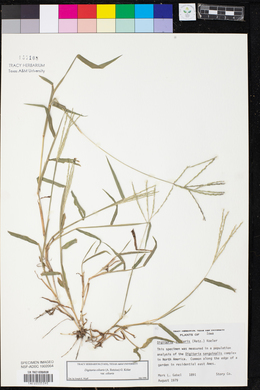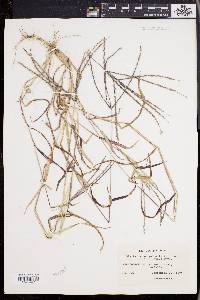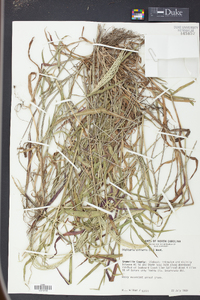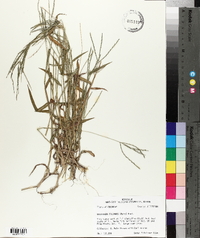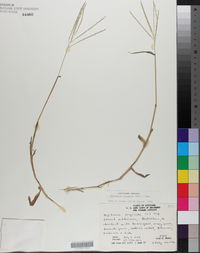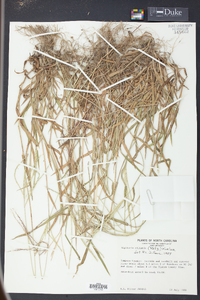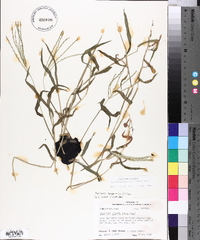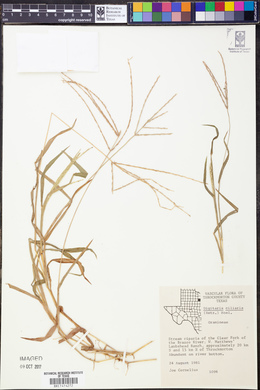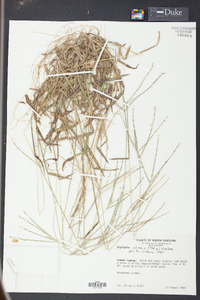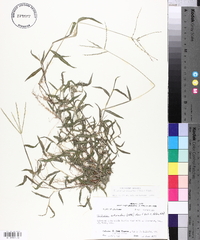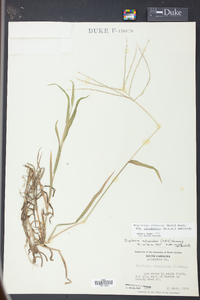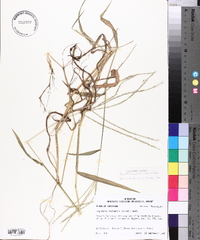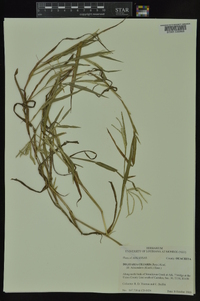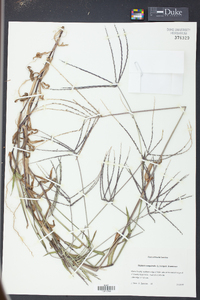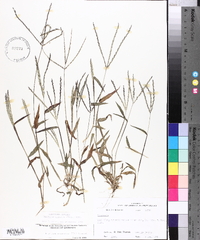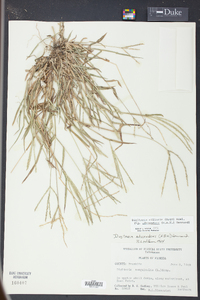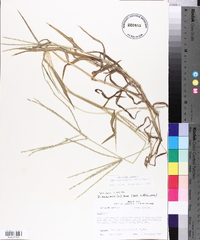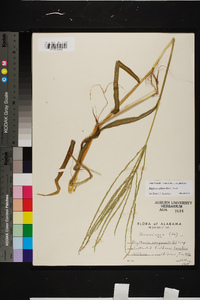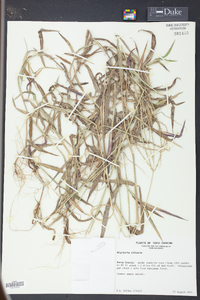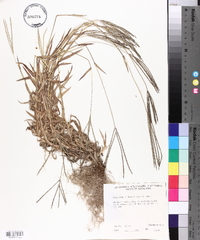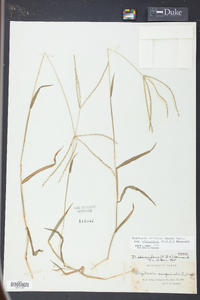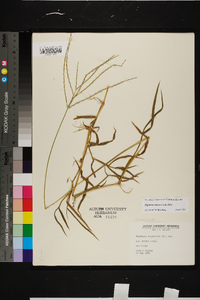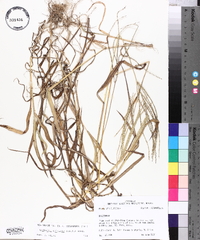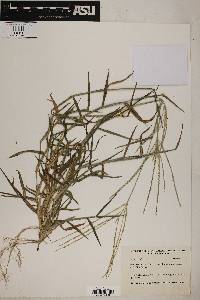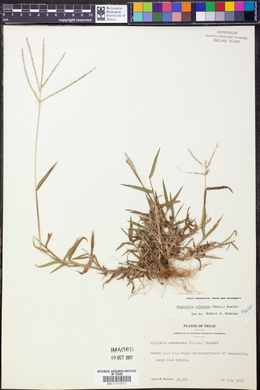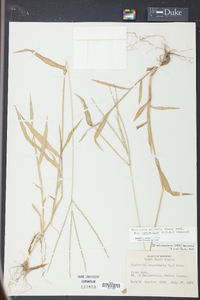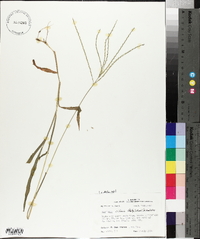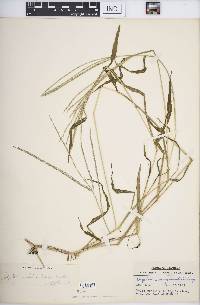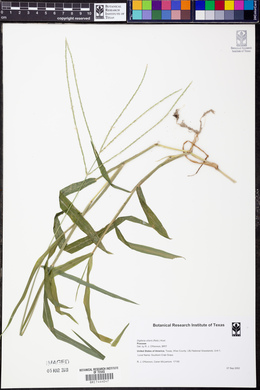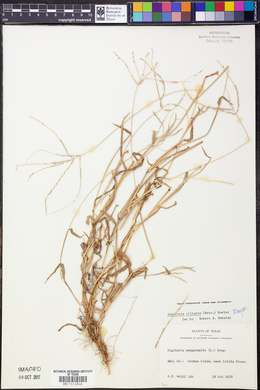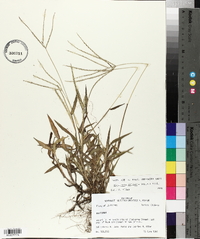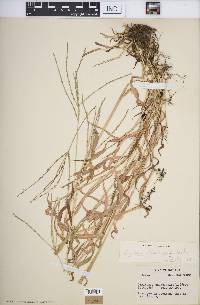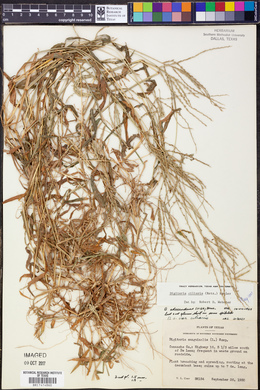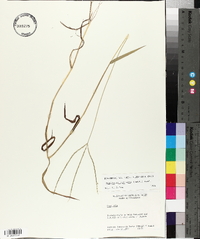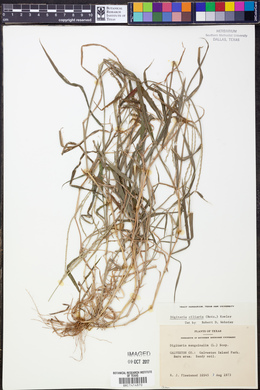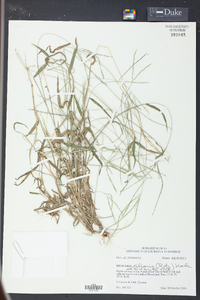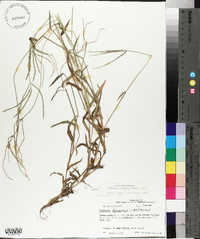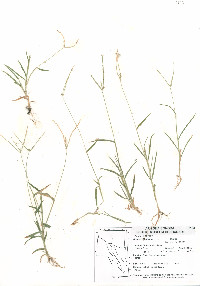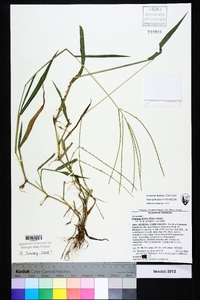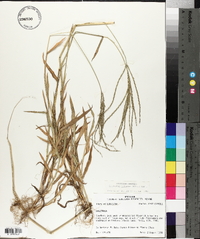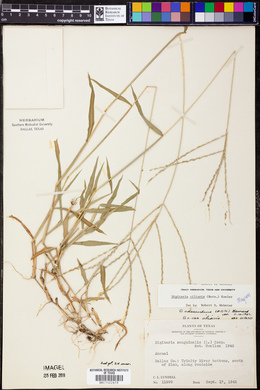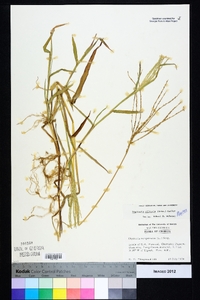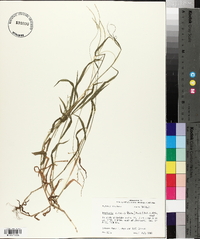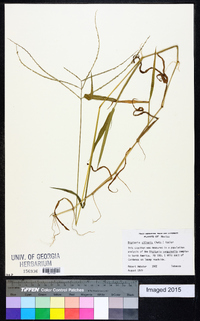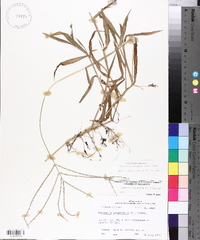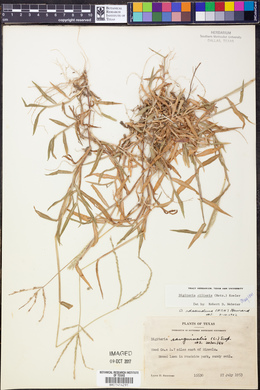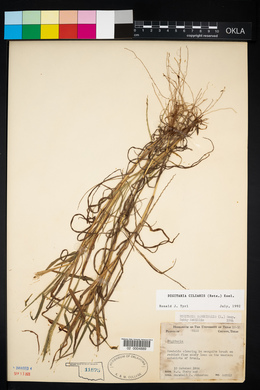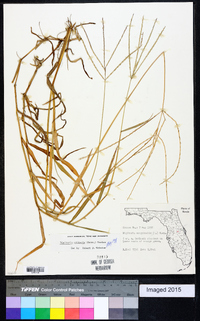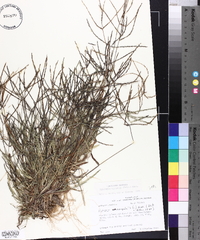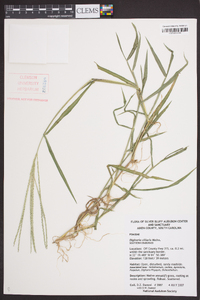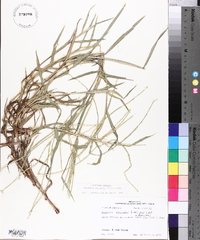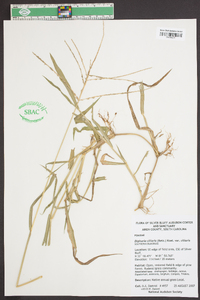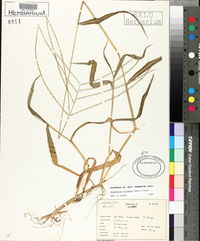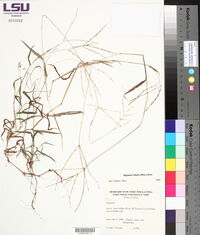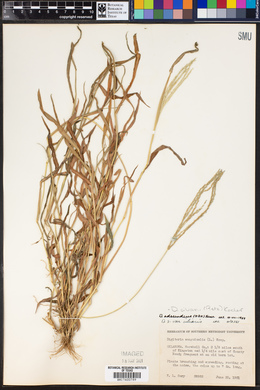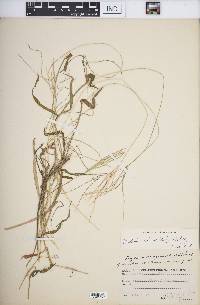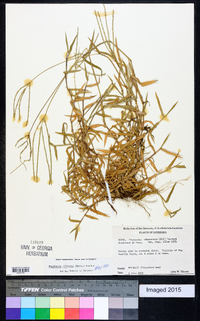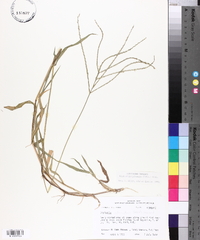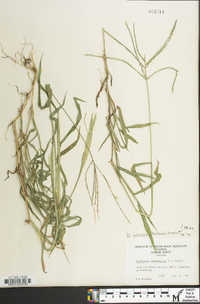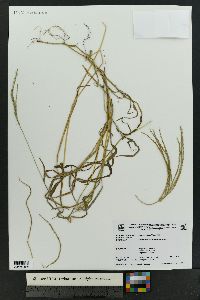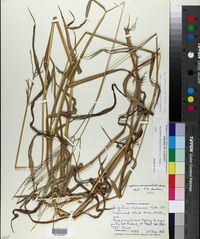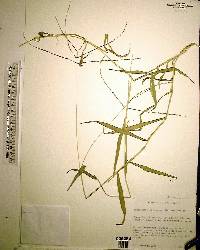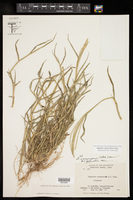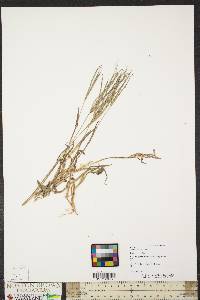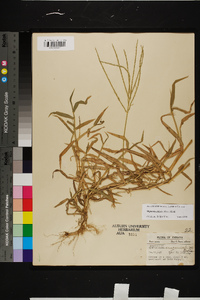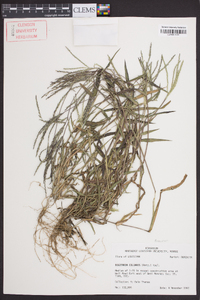
|
|
|
|
Family: Poaceae
Southern Crab Grass, more...southern crabgrass, crabgrass, fingergrass, Henry's crabgrass, kukaepua'a, saulangi, smooth crabgrass, tropical crabgrass
[Digitaria adscendens (Kunth) Henr., moreDigitaria adscendens subsp. adscendens (Kunth) Henrard, Digitaria adscendens subsp. marginata (Link) Henrard, Digitaria adscendens var. adscendens (Kunth) Henrard, Digitaria adscendens var. criniformis Henrard, Digitaria adscendens var. fimbriata (Link) Cufod., Digitaria adscendens var. nubica (Stapf) Henrard, Digitaria brevifolia Link, Digitaria ciliaris subsp. marginata (Link) S.K. Jain & Doli Das, Digitaria ciliaris subsp. nubica (Stapf) S.T. Blake, Digitaria ciliaris var. criniformis (Henrard) R.B. Majumdar, Digitaria ciliaris var. fimbriata (Link) S.K. Jain & Doli Das, Digitaria fimbriata Link, Digitaria henryi Rendle, Digitaria inaequale (Link) Spreng., Digitaria marginata Link, Digitaria marginata var. ciliaris (Retz.) Hook. f. ex Ridl., Digitaria marginata var. fimbriata (Link) Stapf, Digitaria marginata var. linkii Stapf, Digitaria marginata var. nubica Stapf, Digitaria sanguinalis f. ciliaris (Retz.) Hook. f. ex Haines, Digitaria sanguinalis subsp. ciliaris (Retz.) Arcang., Digitaria sanguinalis var. ciliaris (Retz.) Parl., Digitaria sanguinalis var. fimbriata (Link) Stapf ex Merr., Digitaria sanguinalis var. marginata (Link) Fern., Digitaria sanguinalis var. rhachiseta (Henr.) Boivin, Digitaria tarapacana Phil., Milium ciliare (Retz.) Moench, Milium ciliatum Muhl., Panicum adscendens Kunth, Panicum aegyptiacum var. blepharanthum (Hack. ex T. Durand & Schinz) Chiov., Panicum brachyphyllum Steud., Panicum ciliare Retz., Panicum fimbriatum (Link) J. Presl, Panicum henryi (Rendle) Makino & Nemoto, Panicum linkianum Kunth, Panicum marginellum Schrad., Panicum sanguinale subsp. marginatum (Link) Thell., Panicum sanguinale var. blepharanthum Hack. ex T. Durand & Schinz, Panicum sanguinale var. ciliare (Retz.) St.-Amans, Panicum sanguinale var. fimbriatum (Link) Usteri, Paspalum ciliare (Retz.) DC., Paspalum inaequale Link, Paspalum sanguinale var. ciliare (Retz.) Hook. f., Sanguinaria ciliaris (Retz.) Bubani, Spartina pubera Hassk., Syntherisma ciliaris (Retz.) Schrad., Syntherisma fimbriata (Link) Nash, Syntherisma henryi (Rendle) Honda, Syntherisma marginata (Link) Nash, Syntherisma marginatum (Link) Nash, Syntherisma sanguinalis subsp. ciliaris (Retz.) Masam. & Yanagih., Syntherisma sanguinalis var. ciliaris (Retz.) Honda] |
Plants annual or of indefinite duration. Culms 10-100 cm long, erect portion 30-60 cm, long-decumbent, rooting and branching at the decumbent nodes, sparingly branched or unbranched from the upper nodes; nodes 2-5, glabrous. Sheaths with papillose-based hairs; ligules 2-3.5 mm, erose; blades 1.5-14.4(18.9) cm long, 3-9 mm wide, flat, glabrous, a few scattered papillose-based hairs at the base of the adaxial surfaces (occasionally overthe whole adaxial surface), usually also scabrous on both surfaces. Panicles with 2-10 spikelike primary branches, these digitate or in 1-3 whorls on rachises to 2 cm; lowest panicle nodes with hairs more than 0.4 mm; primary branches 3-24 cm long, 0.6-1.2(2) mm wide, glabrous or with less than 1 mm hairs, axes wing-margined, wings at least 1/2 as wide as the midribs, lower and middle portions of the branches with spikelets in unequally pedicellate pairs; secondary branches absent; shorter pedicels 0.5-1 mm; longer pedicels 1.5-4 mm. Spikelets (2.7)2.8-4.1 mm long, homomorphic. Lower glumes 0.2-0.8 mm, acute; upper glumes (1.2)1.5-2.7 mm, about 2/3 to almost as long as the spikelet, 3-veined, margins and apices pilose; lower lemmas 2.7-4.1 mm, 7-veined, veins unequally spaced, outer 3 veins crowded together near each margin, well-separated from the midvein, usually smooth, occasionally the lateral veins scabridulous on the distal 1/3, margins and regions between the 2 inner lateral veins hairy, hairs 0.5-1 mm (rarely glabrous), sometimes also with glassy yellow hairs between the 2 inner lateral veins, these more common on the upper spikelets; upper lemmas 2.5-4 mm, glabrous, yellow, tan, or gray when immature, becoming brown, often purple-tinged (occasionally completely purple) at maturity; anthers 0.6-1 mm. 2n = 36 [J.H. Hunziker, F.O. Zuloaga, O. Morrone, and A. Escobar. 1998. Estudios cromosómicos en Paniceae sudamericanas (Poaceae: Panicoideae). Darwiniana 35:29-36], 54. Digitaria ciliaris is a weedy species, found in open, disturbed areas in most warm-temperate to tropical regions, primarily in the eastern United States. It is particularly abundant in the southeast. So far as is known, the two varieties distinguished in the following key do not differ in any other characters. They are recognized here pending further study.
Annual herb 10 cm - 1 m tall Leaves: alternate, two-ranked. Sheaths open, with bumpy-based hairs. Ligules 2 - 3.5 mm long, membranous. Blades 1.5 - 18 cm long, 3 - 9 mm wide, flat, parallel-veined, rough. Inflorescence: a terminal, palmate or whorled arrangement of spikelet branches (panicle). Branches two to ten, 3 - 24 cm long, 0.5 - 2 mm wide, spike-like, sometimes with hairs under 1 mm long, marginally winged along the axis. Lowest nodes bearing hairs over 0.4 mm long. Fruit: a caryopsis, indehiscent, enclosed within the persistent lemma and palea, flat on one side and convex on the other (plano-convex). Culm: decumbent and upright, unbranched or sparingly branched, 10 cm - 1 m long (upright portion 30 cm - 0.6 m long), round in cross-section, rooting and branching at the nodes. Nodes two to five. Spikelets: 2.5 - 4 mm long. Florets: two per spikelet. Lower florets sterile. Upper florets bisexual. Anthers three, 0.5 - 1 mm long. Stigmas red. Glumes:: Lower glumes about 0.5 mm long, pointed at the apex. Upper glumes 1.5 - 2.5 mm long, two-thirds to nearly as long as spikelet, three-veined, softly hairy at the apex and along the margins. Lemmas:: Lower lemmas 2.5 - 4 mm long, equal to upper lemmas, seven-veined (unequally spaced), membranous, bearing hairs. Upper lemmas brown, often tinged purple, 2.5 - 4 mm long, obscurely veined, with margins that embrace the upper paleas. Paleas:: Lower paleas absent. Upper paleas similar in size and texture to upper lemmas. Similar species: No information at this time. Habitat and ecology: Sandy areas. Occurence in the Chicago region: native Etymology: Digitaria comes from the Latin word digitus, meaning finger, referring to the digitate inflorescence of some species. Ciliaris means "with marginal hairs." Author: The Morton Arboretum FNA 2003, Cronquist et al. 1977, Gould 1980, Kearney and Peebles 1969 Common Name: southern crabgrass Duration: Annual Nativity: Native Lifeform: Graminoid General: Annuals sometimes producing stolons with stems 10-100 cm long, erect for 30-60 cm, long decumbent and rooting and branching at decumbent nodes, sparingly branched from upper nodes. Vegetative: Blades 1.5-14.5 cm long, 3-9 mm wide, flat, glabrous to a few scattered hairs at base of upper surfaces, sheaths keeled, upper margins projecting or scarious margined auricles; ligules 2-3.5 mm, erose to sometimes lacerate. Inflorescence: Panicle with 2-10 spikelike primary branches, digitate or in 1-3 whorls on rachises to 2 cm; lowest panicle nodes with hairs more than 0.5 mm; primary branches 3-24 cm long, 0.5-1.5 mm wide, glabrous or with less than 1 mm hairs, axes wing margined, midrib of the rachis winged on side of the pedicel attachment and merely rounded on opposite side; spikelet pairs alternating from 2 sides of resulting 3-angled rachis; spikelets 2.5-4 mm long, dorsally compressed, unequal glumes, lanceolate, margins and apices pilose. Ecology: Found in disturbed areas below 6,000 ft (1829 m); flowers August-September. Notes: At first glance, this can be confused with D. sanguinalis, but the very small lower glumes, and spikelets 2.5-4 mm long with primary branches glabrous or with hairs 1 mm or less. Ethnobotany: Unknown Etymology: Digitaria is from Latin digitus, a finger, while ciliaris means edged with hairs. Synonyms: Digitaria adscendens, D. sanguinalis var. ciliaris, D. sanguinalis var. marginata, D. sanguinalis var. rhachiseta, panicum adscendens, P. ciliare, Syntherisma marginata Editor: SBuckley, 2010 Much like no. 4 [Digitaria sanguinalis (L.) Scop.], and intergrading with it; blades glabrous or only sparsely papillose-pilose on the upper surface near the throat; spikelets 2.7-3.6 mm; second glume (1-)1.5-2.5 mm, half to four-fifths the length of the spikelet; lateral veins of the sterile lemma smooth; 2n mostly = 54. A weed as no. 4, but more southern; trop. Amer., n. to Va., s. Ind., Mo., and s. Nebr. (D. adscendens) Gleason, Henry A. & Cronquist, Arthur J. 1991. Manual of vascular plants of northeastern United States and adjacent Canada. lxxv + 910 pp. ©The New York Botanical Garden. All rights reserved. Used by permission. |
|
|
|

